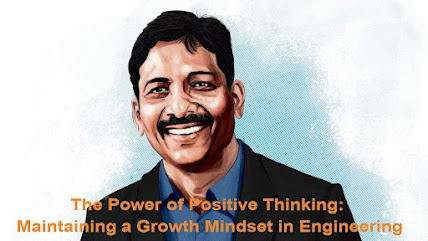
As we step into the future, the field of engineering is poised for groundbreaking transformations driven by emerging technologies. ES Chakravarthy, a visionary engineer and advocate for staying ahead of technological trends, sheds light on the exciting prospects and career opportunities that lie ahead in the ever-evolving landscape of engineering.
The rapid pace of technological advancement is reshaping traditional engineering practices and opening doors to new possibilities. From artificial intelligence (AI) and machine learning to renewable energy and sustainable infrastructure, the future of engineering is defined by innovation and interdisciplinary collaboration.
One of the most prominent emerging technologies in engineering is AI and machine learning. These technologies are revolutionizing various industries, including manufacturing, healthcare, transportation, and beyond. Engineers skilled in AI and machine learning algorithms are in high demand to develop intelligent systems, optimize processes, and drive data-driven decision-making.
ES. Chakravarthy emphasizes the importance of staying updated with AI and machine learning advancements to remain competitive in the job market. He encourages engineers to engage in continuous learning and seek opportunities to apply these cutting-edge technologies in their projects.
Another area of immense potential is renewable energy engineering. With the global shift towards sustainability and reducing carbon footprints, engineers play a crucial role in developing renewable energy sources such as solar, wind, hydro, and geothermal power. Careers in renewable energy engineering offer exciting prospects for innovation, environmental impact, and addressing climate change challenges.
ES. Chakravarthy envisions a future where renewable energy technologies are seamlessly integrated into our infrastructure, powering cities, industries, and transportation systems sustainably. He encourages engineers to explore opportunities in renewable energy and contribute to building a greener and more resilient world.
In addition to AI, machine learning, and renewable energy, other emerging technologies shaping the future of engineering include the Internet of Things (IoT), 5G connectivity, autonomous vehicles, advanced materials, and biotechnology. These technologies present diverse career pathways and opportunities for engineers to make significant contributions to society.
ES. Chakravarthy emphasizes the importance of embracing interdisciplinary collaboration in the future of engineering. He believes that combining expertise from various fields such as engineering, computer science, biology, and environmental sciences can lead to innovative solutions to complex challenges.
Furthermore, the future of engineering is not just about technical skills but also about soft skills such as adaptability, communication, and leadership. As technology evolves, engineers need to be agile and adaptable, willing to learn new skills and navigate dynamic work environments.
Conclusion
The future of engineering is bright and full of exciting opportunities driven by emerging technologies. ES. Chakravarthy's insights remind us that staying ahead of technological trends, embracing interdisciplinary collaboration, and developing both technical and soft skills are key to thriving in the rapidly evolving landscape of engineering. Let's embark on this journey of innovation and shape a future where engineering leads to positive societal impact and sustainable progress.



.jpeg)
.jpg)
.jpg)
.jpg)